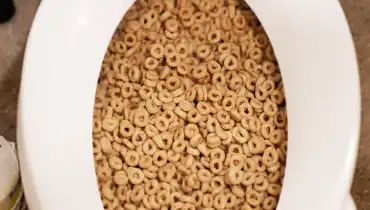Can You to Flush Food in the Toilet?
Call TodayThey are making a few good pointers on the subject of Think Twice Before Flushing Food Down Your Toilet in general in the article beneath.

Introduction
Many people are commonly confronted with the predicament of what to do with food waste, specifically when it concerns leftovers or scraps. One common inquiry that occurs is whether it's okay to purge food down the bathroom. In this post, we'll explore the reasons individuals could consider flushing food, the effects of doing so, and alternative approaches for proper disposal.
Reasons that people might take into consideration flushing food
Lack of recognition
Some people may not understand the potential damage caused by purging food down the toilet. They may wrongly think that it's a safe technique.
Ease
Flushing food down the commode may seem like a fast and very easy option to disposing of undesirable scraps, particularly when there's no nearby trash bin readily available.
Negligence
Sometimes, individuals may simply pick to flush food out of sheer negligence, without thinking about the repercussions of their actions.
Effects of flushing food down the commode
Ecological effect
Food waste that ends up in waterways can add to air pollution and harm aquatic ecosystems. Furthermore, the water utilized to purge food can stress water sources.
Plumbing issues
Flushing food can cause clogged up pipes and drains pipes, creating pricey pipes repairs and hassles.
Kinds of food that must not be flushed
Coarse foods
Foods with fibrous structures such as celery or corn husks can get tangled in pipes and cause obstructions.
Starchy foods
Starchy foods like pasta and rice can soak up water and swell, causing blockages in pipelines.
Oils and fats
Greasy foods like bacon or cooking oils need to never ever be flushed down the toilet as they can strengthen and cause blockages.
Appropriate disposal methods for food waste
Making use of a garbage disposal
For homes outfitted with waste disposal unit, food scraps can be ground up and flushed via the pipes system. Nonetheless, not all foods appropriate for disposal in this manner.
Recycling
Particular food product packaging products can be recycled, lowering waste and decreasing environmental effect.
Composting
Composting is an environment-friendly method to throw away food waste. Organic products can be composted and utilized to improve dirt for horticulture.
The value of appropriate waste management
Decreasing ecological injury
Correct waste monitoring practices, such as composting and recycling, assistance lessen pollution and protect natural resources for future generations.
Shielding pipes systems
By staying clear of the method of flushing food down the toilet, homeowners can stop costly plumbing fixings and keep the integrity of their plumbing systems.
Final thought
To conclude, while it might be alluring to purge food down the commode for convenience, it's important to understand the possible effects of this action. By adopting appropriate waste monitoring methods and getting rid of food waste responsibly, individuals can contribute to much healthier plumbing systems and a cleaner setting for all.
FLUSH FOOD DOWN THE TOILET?
FLUSHING FOOD CAN CAUSE BLOCKED DRAINS IN YOUR HOME
All of the plumbing fixtures in your home are connected to the same sewer pipe outside of your home. This outdoor sewer pipe is responsible for transporting all the wastewater from your home to the Council sewer mains. Even small pieces of food that go down the kitchen sink can cause problems for your sewer. It should therefore be obvious that flushing larger bits of food, such as meat, risks a clog in either the toilet itself or the sewer pipes. Flushing greasy food is even more problematic because oil coagulates when it cools, coating the interior lining of your pipes.
THE TOILET IS NOT A BIN
Food isn’t the only thing that people shouldn’t be flushing down the toilet. People use the toilet to dispose of all kinds of things such as tampons, makeup wipes, dental floss, kitty litter and even underwear. Water goes to great lengths to educate residents about the high costs and stress placed on wastewater treatment systems simply from people flushing the wrong stuff down the toilet. It costs taxpayers millions of dollars each year, and homeowners thousands in blocked drain repairs.
FLUSHING FOOD IS A WASTE OF WATER
Flushing food is a waste of our most precious resource - water. In June this year Level 1 water restrictions were introduced to protect water supply from drought conditions. Much of New South Wales continues to be affected by prolonged drought with recent figures revealing up to 97 per cent of the state remains in drought. Depending on whether you have a single or dual flush toilet, every single flush uses between five and 11 litres of water. In the current climate this is a huge amount of water to be wasting on flushing food that should be placed in the bin (or better yet, the compost).
https://www.jabplumbingsolutions.com.au/blog/can-you-flush-food-down-the-toilet

We were shown that article on Think Twice Before Flushing Food Down Your Toilet through an acquaintance on another web blog. Sharing is nice. Helping others is fun. Thanks so much for taking the time to read it.
Request Appointment